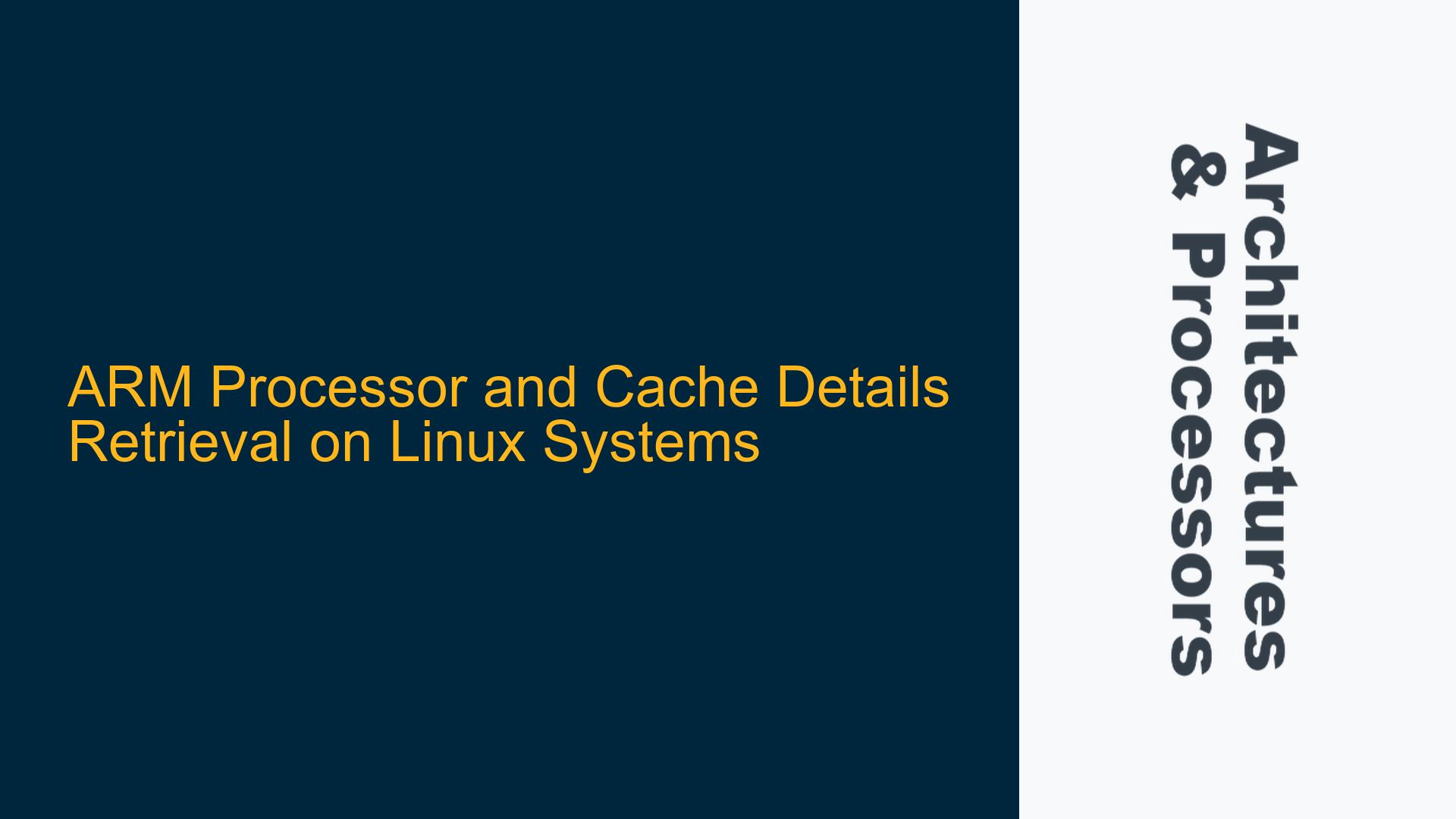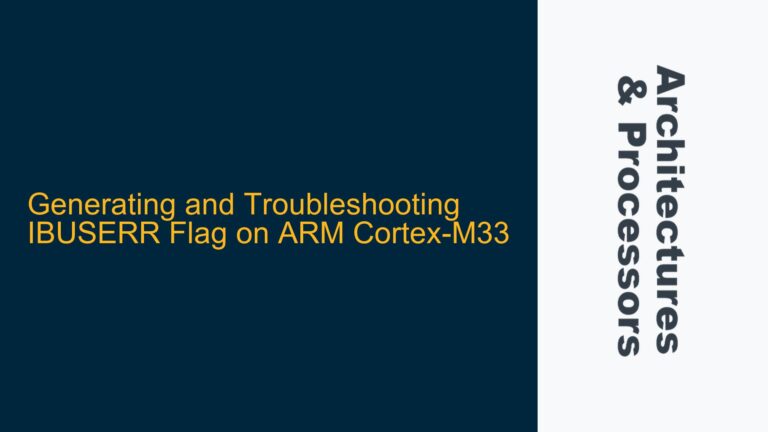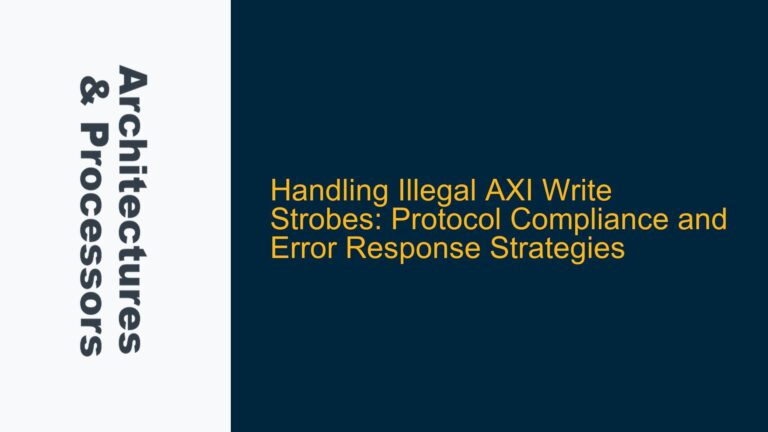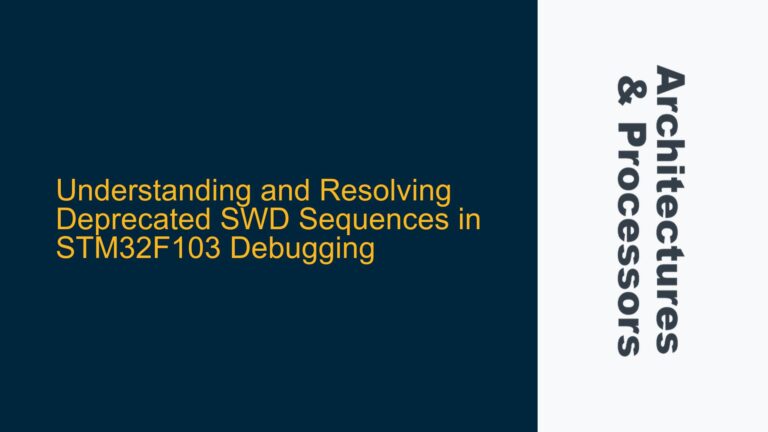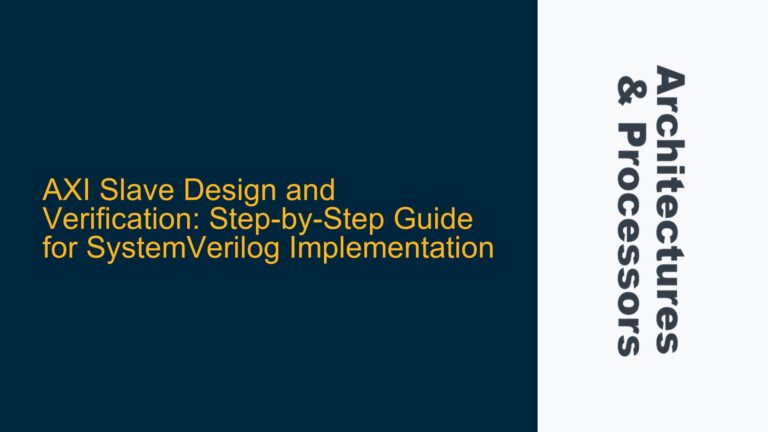ARM Processor Identification and Cache Configuration Challenges
When working with ARM-based systems, particularly in environments like RedHat Linux, developers often face challenges in accurately identifying the processor type and retrieving detailed cache configuration information. Unlike x86 systems, where the CPUID instruction provides a straightforward method to obtain processor family, model, and cache details, ARM architectures require a more nuanced approach. The primary issue revolves around the lack of a direct equivalent to the CPUID instruction in ARM architectures, necessitating the use of specific registers and system interfaces to gather this information.
The ARMv8 architecture introduces several system registers that can be used to retrieve processor and cache details. However, these registers often provide partial information, requiring developers to piece together the complete picture. For instance, the MIDR_EL1 register can be used to identify the processor model, but it does not provide cache details. Similarly, the CTR_EL0 register offers insights into the smallest cache line size but falls short of providing comprehensive cache configuration data.
The challenge is further compounded by the fact that tools like dmidecode, which rely on SMBIOS data, may not provide all the necessary details. While dmidecode can retrieve some cache information, such as total size and associativity, it often omits critical details like cache line size. This limitation necessitates a deeper dive into ARM-specific registers and system interfaces to obtain the required information.
MIDR_EL1 and CTR_EL0 Registers: Limitations and Interpretation
The MIDR_EL1 (Main ID Register) and CTR_EL0 (Cache Type Register) are two key registers in the ARMv8 architecture that can be used to gather processor and cache details. However, both registers have limitations that can make it difficult to obtain a complete picture of the system’s configuration.
The MIDR_EL1 register is primarily used to identify the processor model. It contains fields that specify the implementer, variant, architecture, primary part number, and revision of the processor. While this information is useful for distinguishing between different ARM processors, it does not provide any details about the cache configuration. Developers must rely on other means to retrieve cache-related information.
The CTR_EL0 register, on the other hand, provides some cache-related details but is limited in scope. Specifically, the DminLine field in CTR_EL0 indicates the log2 of the number of words in the smallest cache line of all the data caches and unified caches controlled by the Processing Element (PE). While this information is useful, it only provides the smallest possible cache line size, not the actual line size of each cache level. Additionally, CTR_EL0 does not provide information about cache size, associativity, or other configuration details.
To overcome these limitations, developers must combine information from multiple sources, including system registers, kernel interfaces, and system tools like dmidecode. This multi-faceted approach allows for a more comprehensive understanding of the system’s processor and cache configuration.
Retrieving Comprehensive Cache Details via Kernel Interfaces and System Tools
Given the limitations of the MIDR_EL1 and CTR_EL0 registers, developers must rely on a combination of kernel interfaces and system tools to retrieve comprehensive cache details on ARM-based Linux systems. The Linux kernel provides several interfaces that can be used to gather cache information, including the /sys/devices/system/cpu/cpu0/cache directory, which contains detailed information about each cache level.
The /sys/devices/system/cpu/cpu0/cache directory contains subdirectories for each cache level (e.g., index0, index1, etc.), each of which contains files that provide details about the cache’s size, associativity, line size, and type (data, instruction, or unified). By parsing these files, developers can obtain a complete picture of the system’s cache configuration.
In addition to kernel interfaces, system tools like lscpu and dmidecode can be used to gather processor and cache information. While dmidecode provides some cache details, it is often limited in scope. The lscpu command, on the other hand, provides a more comprehensive view of the system’s CPU and cache configuration, including details about cache size, line size, and associativity.
To retrieve the actual cache line size, developers can use the getconf command, which provides system configuration variables, including the cache line size. For example, the command getconf LEVEL1_DCACHE_LINESIZE returns the line size of the Level 1 data cache. This information can be combined with data from the /sys/devices/system/cpu/cpu0/cache directory to obtain a complete understanding of the system’s cache configuration.
In summary, while ARM architectures do not provide a direct equivalent to the x86 CPUID instruction, developers can use a combination of system registers, kernel interfaces, and system tools to retrieve detailed processor and cache information. By leveraging these resources, developers can overcome the limitations of individual registers and tools, ensuring that they have the information needed to optimize their software for ARM-based systems.
Implementing a Comprehensive Cache Information Retrieval Strategy
To implement a comprehensive cache information retrieval strategy on ARM-based Linux systems, developers should follow a systematic approach that combines the use of system registers, kernel interfaces, and system tools. This approach ensures that all relevant cache details are gathered, allowing for accurate system configuration analysis and optimization.
The first step in this strategy is to use the MIDR_EL1 register to identify the processor model. This information can be retrieved using a combination of assembly code and kernel interfaces. For example, the following assembly code can be used to read the MIDR_EL1 register:
mrs x0, midr_el1
This code reads the MIDR_EL1 register into the x0 register, which can then be parsed to extract the processor implementer, variant, architecture, primary part number, and revision. This information is crucial for distinguishing between different ARM processors and understanding their capabilities.
Next, developers should use the CTR_EL0 register to gather basic cache information, particularly the smallest cache line size. The following assembly code can be used to read the CTR_EL0 register:
mrs x0, ctr_el0
The DminLine field in the CTR_EL0 register provides the log2 of the number of words in the smallest cache line. This value can be used to calculate the actual cache line size by raising 2 to the power of the DminLine value and multiplying by the word size (typically 4 bytes on ARM systems).
Once the basic processor and cache information has been gathered, developers should turn to kernel interfaces to obtain more detailed cache configuration data. The /sys/devices/system/cpu/cpu0/cache directory contains subdirectories for each cache level, each of which contains files that provide details about the cache’s size, associativity, line size, and type. By parsing these files, developers can obtain a complete picture of the system’s cache configuration.
For example, the following command can be used to retrieve the size of the Level 1 data cache:
cat /sys/devices/system/cpu/cpu0/cache/index0/size
Similarly, the following command can be used to retrieve the line size of the Level 1 data cache:
cat /sys/devices/system/cpu/cpu0/cache/index0/coherency_line_size
In addition to kernel interfaces, system tools like lscpu and getconf can be used to gather additional cache information. The lscpu command provides a comprehensive view of the system’s CPU and cache configuration, including details about cache size, line size, and associativity. The getconf command can be used to retrieve specific cache configuration variables, such as the cache line size.
For example, the following command can be used to retrieve the line size of the Level 1 data cache:
getconf LEVEL1_DCACHE_LINESIZE
By combining information from system registers, kernel interfaces, and system tools, developers can implement a comprehensive cache information retrieval strategy that provides all the details needed to optimize software for ARM-based systems. This approach ensures that developers have a complete understanding of the system’s processor and cache configuration, allowing them to make informed decisions about software design and optimization.
Conclusion
Retrieving detailed processor and cache information on ARM-based Linux systems requires a multi-faceted approach that combines the use of system registers, kernel interfaces, and system tools. While ARM architectures do not provide a direct equivalent to the x86 CPUID instruction, developers can leverage the MIDR_EL1 and CTR_EL0 registers, along with kernel interfaces like /sys/devices/system/cpu/cpu0/cache and system tools like lscpu and getconf, to gather comprehensive cache configuration data.
By following a systematic approach that includes reading system registers, parsing kernel interface files, and using system tools, developers can overcome the limitations of individual registers and tools, ensuring that they have the information needed to optimize their software for ARM-based systems. This comprehensive cache information retrieval strategy is essential for developers working on performance-critical applications, where understanding the system’s cache configuration is crucial for achieving optimal performance.
